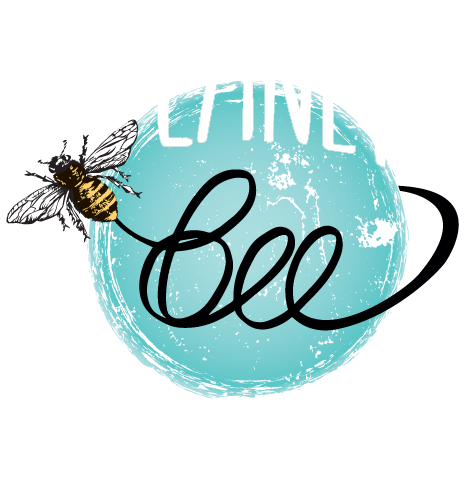Why Honey Looks Different & How Each Variety Tastes
- Planet Bee Foundation
- Aug 28, 2024
- 4 min read
Updated: Oct 4, 2024
Honey is a marvel of nature, offering a vibrant array of colors and flavors that reflect its diverse origins. But have you ever wondered why honey comes in so many shades and tastes so differently? Let’s dive into the fascinating world of honey to uncover why its appearance and flavor can vary so widely.
Why Does Honey Look and Taste Different?
Honey’s color and taste are influenced by several key factors:
Floral Source: The primary determinant of honey’s color and flavor is the nectar source. Different flowers produce nectar with unique compounds, affecting both the hue and taste of the honey. For example, clover nectar yields light, mild honey, while buckwheat nectar results in dark, robust honey. The type of flower influences the overall character of the honey, making each variety distinct.
Geography and Climate: Where honey is produced also affects its appearance and flavor. Local flora, soil conditions, and climate can all play a role. For instance, honey from the Mediterranean region might have different characteristics compared to honey from the U.S., due to the varying types of plants and environmental conditions.
Seasonal Variations: The time of year can impact honey’s color and taste. Honey collected in the spring may be lighter due to early blooming flowers, while fall honey might be darker as bees gather nectar from late-season blooms. Seasonal changes contribute to the diversity in honey’s appearance and flavor profiles.

Exploring Different Varieties of Honey
Here’s a look at some popular honey varieties, their flavors, and where you can find them:
Clover Honey: Common in the United States, particularly in North Dakota and Montana, clover honey is light in color with a mild, sweet flavor. Its versatility makes it a favorite for many uses, from baking to sweetening tea.
Wildflower Honey: This honey is produced from the nectar of various wildflowers, resulting in a spectrum of colors from light amber to dark brown. Its robust and complex flavor reflects the diverse sources of nectar. Wildflower honey can be found across the U.S., especially in areas with rich floral diversity like Texas and Florida, and internationally in places like Spain and India.
Buckwheat Honey: Dark and rich with a molasses-like flavor, buckwheat honey is known for its strong taste and high antioxidant content. It’s commonly found in the northern U.S., such as Pennsylvania and New York, and in Eastern Europe.
Orange Blossom Honey: Light amber with a citrusy flavor, this honey is produced from the nectar of orange blossoms. It’s prevalent in Florida and California, where orange groves are abundant, and is also popular in Mediterranean regions like Spain.
Manuka Honey: Hailing from New Zealand, Manuka honey is dark and thick with a slightly bitter, medicinal taste. Renowned for its antibacterial properties, it is also found in parts of Australia.
Acacia Honey: Very light in color and mild in flavor, acacia honey is slow to crystallize, making it ideal for those who prefer liquid honey. It’s commonly produced in Europe, particularly Hungary and Romania, and can also be found in parts of the U.S.
Discover Your Favorite Honey Variety
With such a diverse range of honey types available, there’s a perfect match for every taste preference. Whether you’re drawn to the light, floral notes of orange blossom honey or the rich, robust flavor of buckwheat, exploring different kinds of honey can be a delightful adventure. Next time you choose honey, consider trying a new variety to experience the unique flavors and colors that nature offers.
At Planet Bee Foundation, we celebrate honey’s diversity and the remarkable work of bees. Understanding why honey looks and tastes different enhances our appreciation for this natural wonder and the vital role bees play in our world. Enjoy the journey of tasting and discovering your favorite honey!
Join Our Virtual Honey Tasting Team Building Workshops
Looking to engage your team uniquely and enjoyably? Planet Bee Foundation offers virtual honey-tasting workshops that provide a sweet opportunity for team building and education. Our interactive sessions allow participants to explore a range of honey varieties, learn about their distinct flavors and colors, and discover the fascinating world of bees. It’s a fun and informative way to bond with your team while supporting bee conservation efforts. Contact us today to schedule your virtual honey-tasting experience and taste the diversity of honey from the comfort of your own space!
Resources
Floral Source:
National Honey Board. (n.d.). Understanding Honey Varieties. Retrieved from National Honey Board.
USDA Agricultural Research Service. (2023). Honey Varieties and Their Characteristics. Retrieved from USDA.
Geography and Climate:
Bonner, F. T., & Haynes, J. B. (2005). Honey Production and the Role of Geography. Journal of Apicultural Research. Retrieved from Apicultural Research.
Seasonal Variations:
Hedges, J. D. (2010). The Impact of Seasonal Changes on Honey Characteristics. Bee World, 91(4), 78-84. Retrieved from Bee World.
Clover Honey:
North Dakota Honey Producers Association. (n.d.). Clover Honey Characteristics. Retrieved from ND Honey Producers.
Wildflower Honey:
Texas Beekeepers Association. (n.d.). Wildflower Honey: A Texas Specialty. Retrieved from Texas Beekeepers.
Buckwheat Honey:
Buckwheat Honey Association. (n.d.). Buckwheat Honey: Properties and Benefits. Retrieved from Buckwheat Honey.
Orange Blossom Honey:
Florida Department of Agriculture and Consumer Services. (2022). Orange Blossom Honey: A Florida Treasure. Retrieved from FDACS.
Manuka Honey:
New Zealand Manuka Honey Association. (n.d.). Manuka Honey: Characteristics and Uses. Retrieved from NZ Manuka Honey.
Acacia Honey:
European Honey Bee Research Network. (2023). Acacia Honey: A Study on Its Properties. Retrieved from European Honey Bee.

